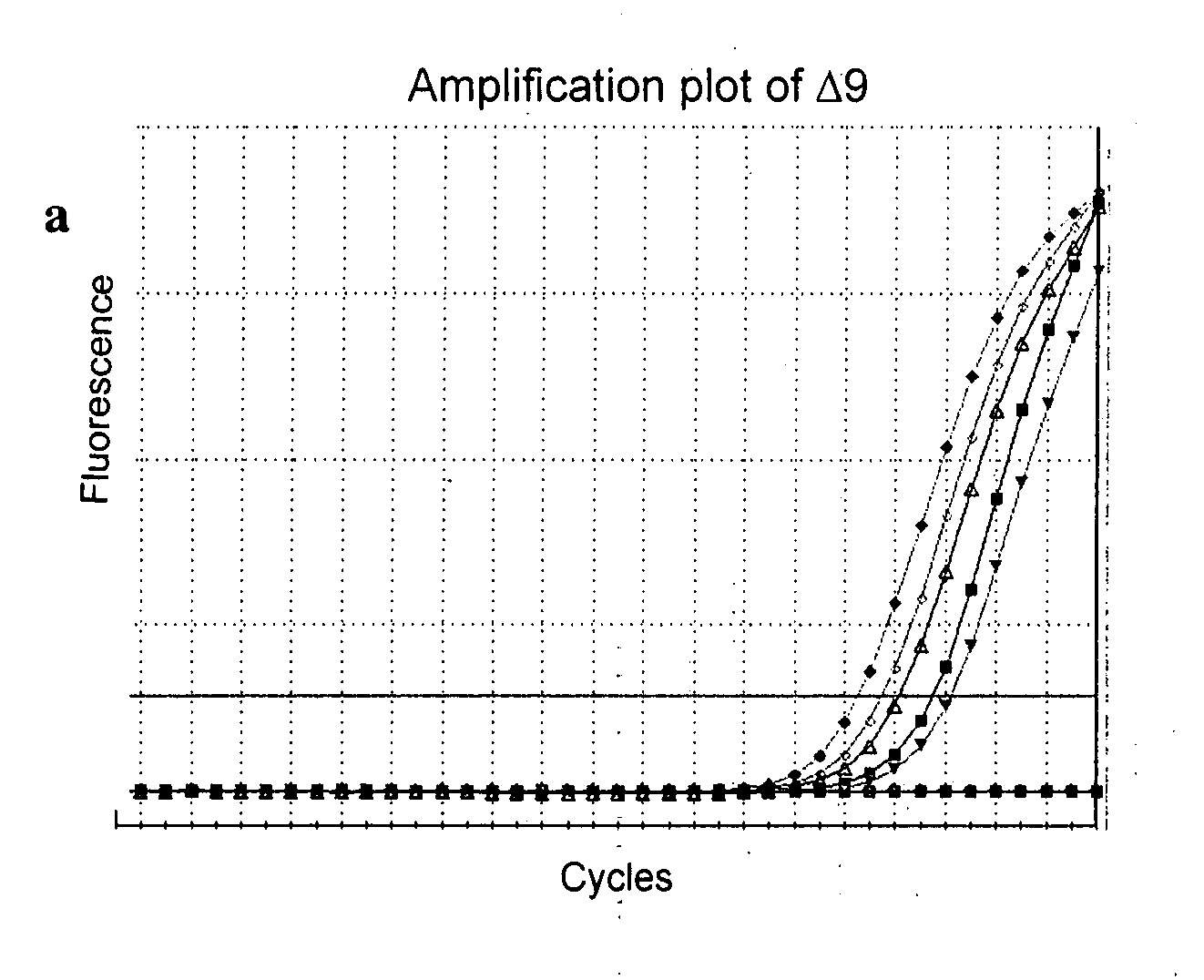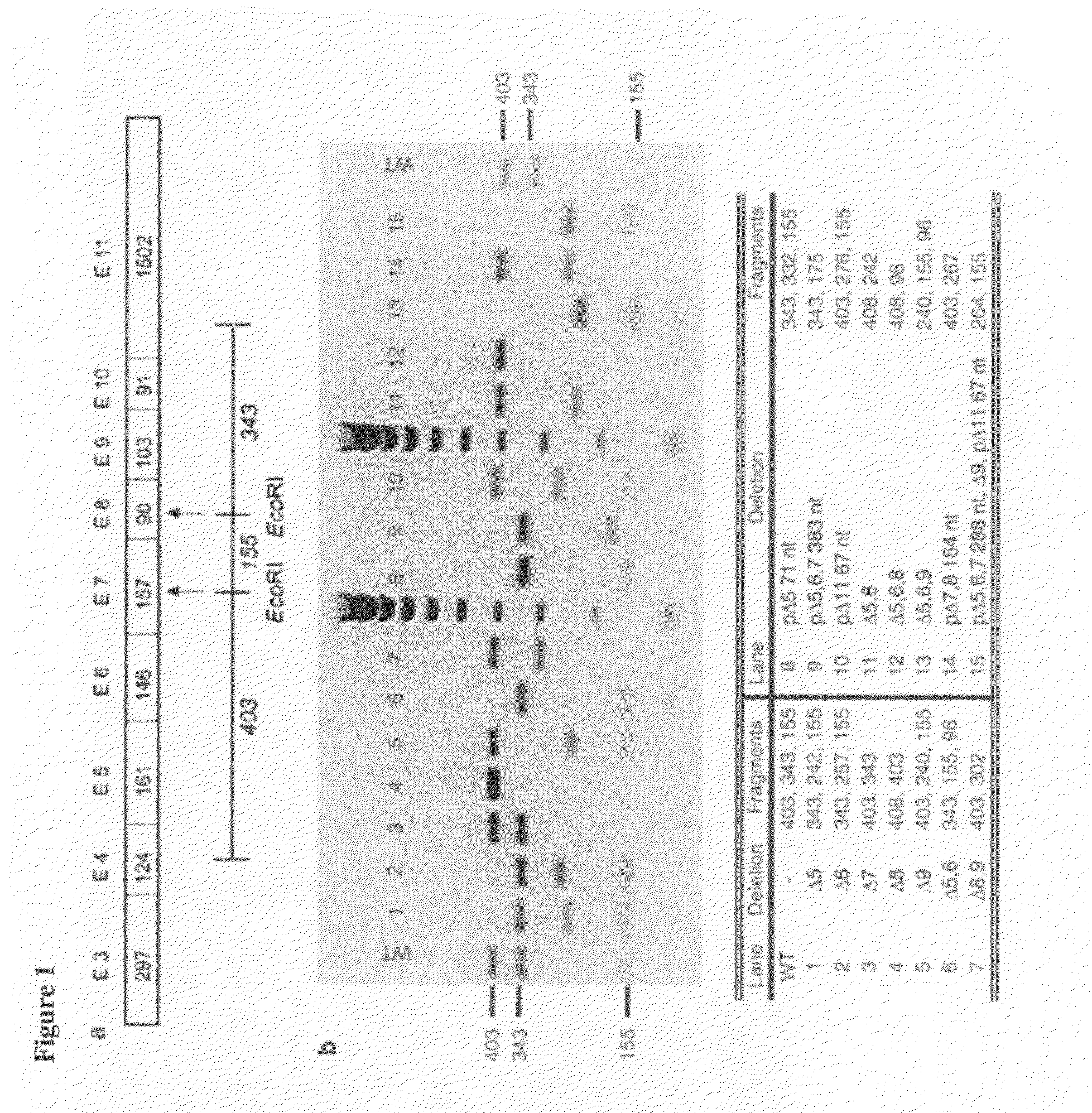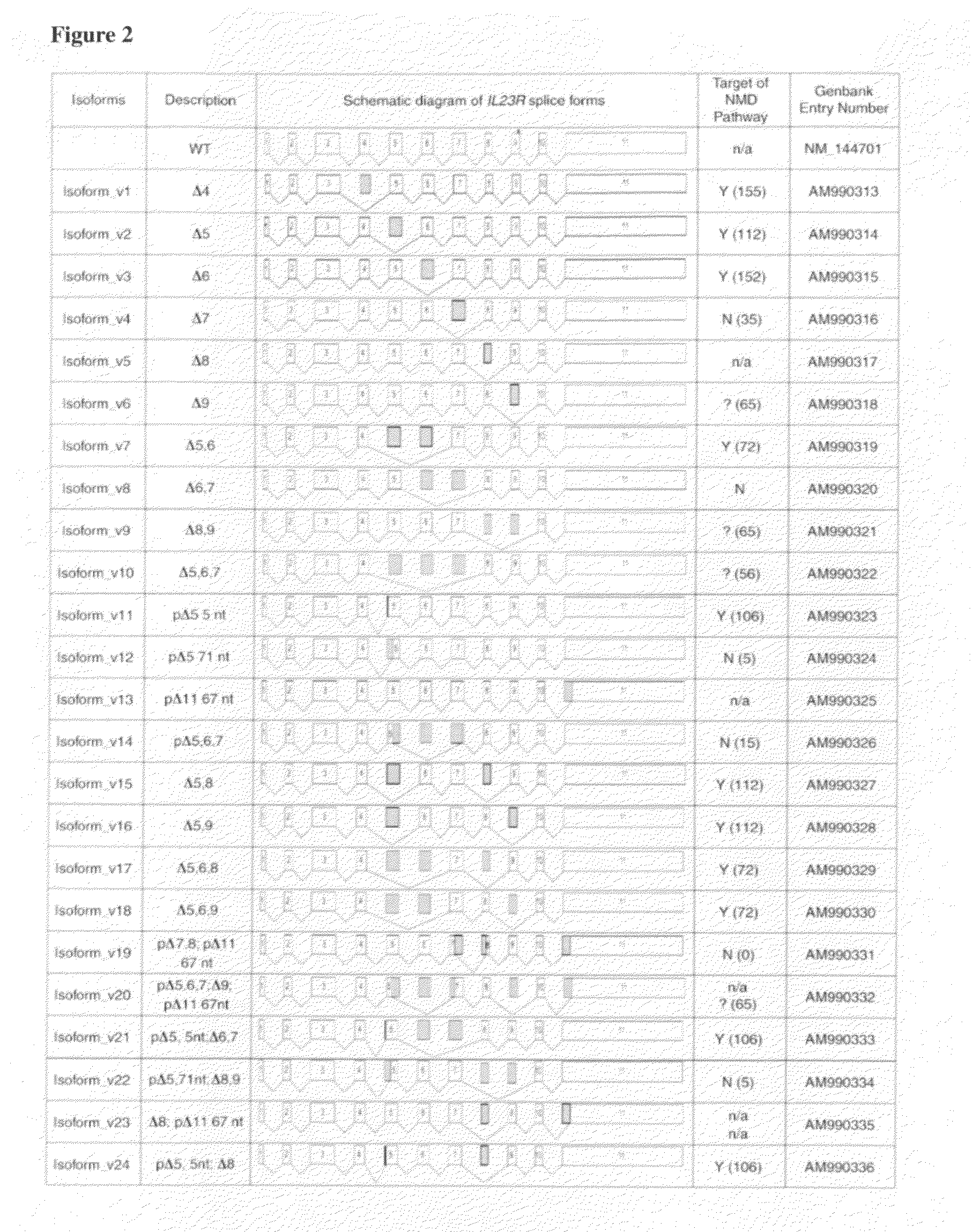Splice variants of human IL-23 receptor (IL-23R) mRNA and use of a delta 9 isoform in predicting inflammatory bowel diseases
a cytokine receptor and variant technology, applied in biochemistry, fermentation, organic chemistry, etc., can solve the problems of affecting the entire digestive system, increasing the risk of cancer in the inflammation area, and affecting the lining of the small and large intestines, so as to reduce and increase the risk of inflammatory bowel diseas
- Summary
- Abstract
- Description
- Claims
- Application Information
AI Technical Summary
Benefits of technology
Problems solved by technology
Method used
Image
Examples
example 1
Evidence for Multiple Splice Variant Transcripts of IL-23 R mRNA
[0093]IL-23Rα protein is shown to express on T cells, NK cells, monocytes and dendritic cells [Parham et al. 2002]. In our study, we used reverse-transcriptase PCR method and observed a low, if any detectable, level of expression for IL-23R in un-stimulated peripheral blood mononuclear cells (PBMC). In contrast, we detected a significant up-regulation of the IL-23R cDNA in PBMC after mitogen stimulation for 72 hours.
[0094]Next, we used forward primer P3 or forward primer P5 in combination with a reverse primer P6 to generate IL-23R amplicons. The predicted sizes were estimated to be 1,234 bp and 901 bp, respectively. We found multiple transcripts with smaller sizes than the expected sizes of the IL-23R amplicons. This observation suggests the potential existence of multiple splice variant transcripts of the IL-23R mRNA in PBMC.
example 2
Cloning of Multiple Splice Variant Transcripts of IL-23 R mRNA
[0095]Based on this observation, we cloned the multiple splice variant transcripts of IL-23R mRNA. Total RT-PCR products were cloned into TOPO-TA vector pCR2.1 (InVitrogen) to identify the variants of each PCR product individually. Colony PCR was first applied using M13 forward and M13 reverse primers located along the sides the TA cloning sites on the vector to initially screen the colonies generating amplicon size smaller than the wild-type IL-23R.
example 3
Detection and Identification of IL-23R Splice Variants
[0096]In this study, both restriction enzyme digestion and sequence analysis were applied to determine different IL-23R splice variants in activated PBMC cells. To distinguish differences in IL-23R cDNA due to splicing, restriction endonuclease digestion was first performed on the cloned PCR products and band sizes were resolved by agarose gel electrophoresis. The digestion was designed to visualize various IL-23R exon skipping as well as partial exon skipping variants.
[0097]Two endogenous EcoRI sites within exon 7 and exon 8 of “wild-type” IL-23R mRNA yielded three DNA fragments of clearly differing size, as depicted in FIG. 1.
[0098]The EcoRI restriction digestion of IL-23R P5 / P6 PCR fragment clones comprised of three DNA pieces: (i) exon 4-7 (403 bp); (ii) exon 7-8 (155 bp); and (iii) exon 8-11 (343 bp), covering the area after the translated signal peptide which is possibly the area containing most of the alternative splicing ...
PUM
| Property | Measurement | Unit |
|---|---|---|
| volume | aaaaa | aaaaa |
| volume | aaaaa | aaaaa |
| total volume | aaaaa | aaaaa |
Abstract
Description
Claims
Application Information
 Login to View More
Login to View More - R&D
- Intellectual Property
- Life Sciences
- Materials
- Tech Scout
- Unparalleled Data Quality
- Higher Quality Content
- 60% Fewer Hallucinations
Browse by: Latest US Patents, China's latest patents, Technical Efficacy Thesaurus, Application Domain, Technology Topic, Popular Technical Reports.
© 2025 PatSnap. All rights reserved.Legal|Privacy policy|Modern Slavery Act Transparency Statement|Sitemap|About US| Contact US: help@patsnap.com



